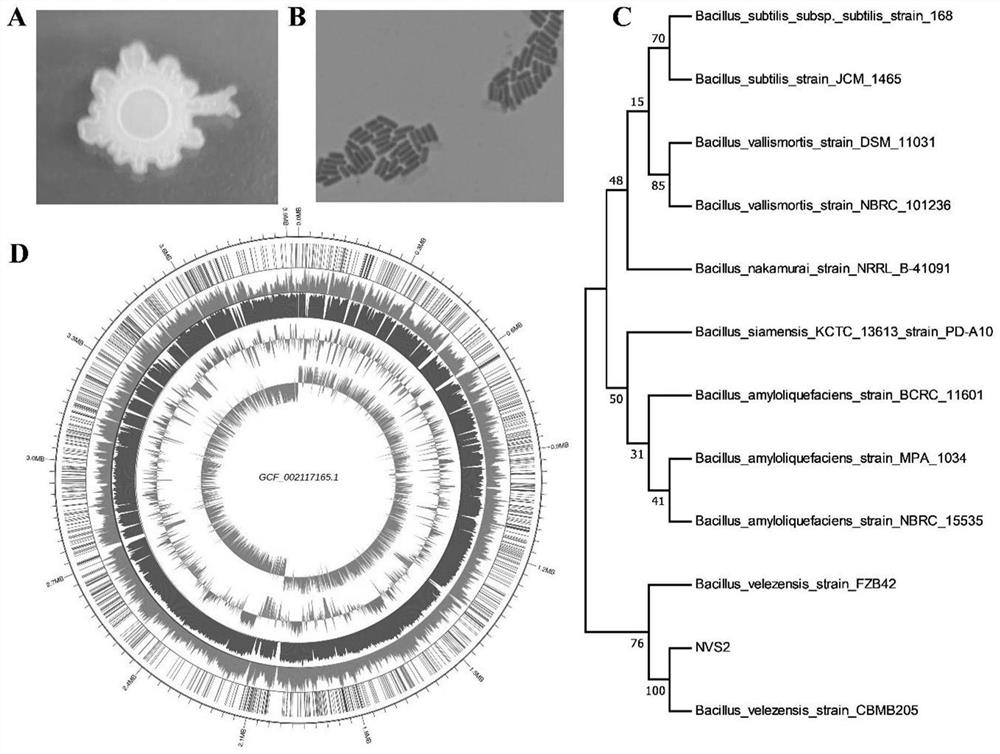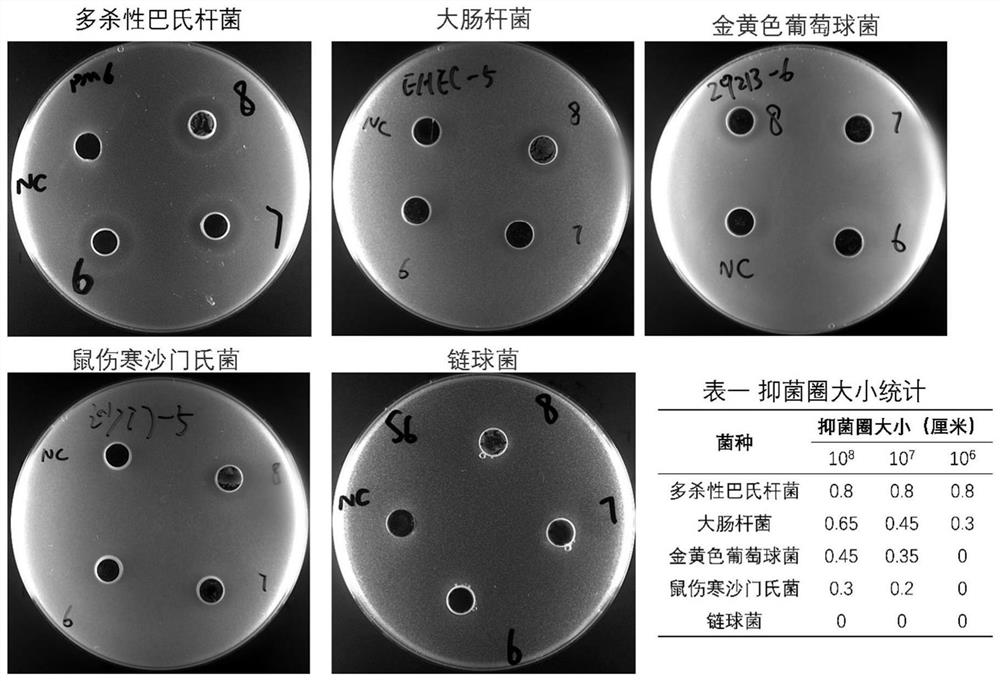Bacillus velezensis derived from sheep nasal cavity and application thereof
A technology based on Bacillus sp. and source Belles, which is applied in the fields of microbiology, molecular biology, and biological control. Effect
- Summary
- Abstract
- Description
- Claims
- Application Information
AI Technical Summary
Problems solved by technology
Method used
Image
Examples
Embodiment 1
[0038] Embodiment 1: Isolation and identification of Bacillus velei NSV2 bacterial strains
[0039] 1.1 Sample collection
[0040] Select healthy flocks from a vineyard in Nanjing City, Jiangsu Province, insert a sterile cotton swab into the nasal cavity for more than 10 cm, and rotate it repeatedly to collect nasal mucus. After the collection is completed, quickly put it into a sterile sampling tube, mark it, and bring it back to the laboratory at 4°C.
[0041] Refer to GB / T 1.1-2009 to isolate Bacillus in pig nasal cavity swabs. The specific steps are as follows: 1) Aseptically open the centrifuge tubes containing nasal swabs in the ultra-clean bench, add 500 μL of PBS solution to each tube, and then shake and centrifuge repeatedly. tube three times, after oscillating for 15s each time, put it in a 4°C refrigerator and let it stand for 15 minutes; 2) Open the centrifuge tube, use tweezers to squeeze the leachate remaining from the swab into the centrifuge tube, and heat it ...
Embodiment 2
[0054] Embodiment 2: Bacillus velei NSV2 antiviral effect
[0055] 2.1 Cytotoxicity evaluation of Bacillus Velez NSV2 and its secreted products
[0056] Inoculate 100 μL of 10 8 / mL of fresh Bacillus velei NSV2 bacteria liquid into liquid 5mL LB medium, cultured at 37°C 220rpm for 12-16h. Centrifuge at 300g for 10min to collect the supernatant and bacterial pellet respectively. Bacteria were washed three times with PBS, counted and diluted to 10 with culture medium 4 , 10 5 , 10 6 , 10 7 and 10 8,spare. The supernatant was centrifuged again at high speed (10000g, 10min), and the supernatant was collected again and filtered with a 0.22 μM filter membrane, and diluted to 100%, 50%, 25%, 5% and 1% in proportion, and set aside. The above-mentioned diluted test substances were added respectively, and cultured on the VERO cells in a 96-well plate covering 90% of the monolayer, with 5 replicates for each concentration, and blank wells and control wells were set at the same ti...
Embodiment 3
[0074] Embodiment 3: Belaisia bacillus NSV2 suppresses the action characteristic of PRV infection
[0075] For the experimental treatment method, refer to Example 2, the pretreatment group in step 2.2. Protein and RNA samples were collected at 0h, 2h, 4h, 6h, 12h and 24h after pretreatment of PK15 cells with Bacillus beilesiform NSV2. For detection steps, refer to 2.2 of Example 2. After Western blot and fluorescence quantitative detection, PRV began to decrease significantly at 6 hours after pretreatment with Bacillus beilesiformis NSV2 (P Figure 6 A, B and C).
[0076] further as Figure 6 As shown in D, after the cells were pretreated with Bacillus beilesiformis NSV2 for 12 hours, the bacterial liquid was aspirated, and the empty medium was added to shake gently, discarded, and the residual beileizia bacillus NSV2 was washed away three times. After incubating the cells and virus at 4°C for 1.5 h, they were washed away directly, and the RNA samples were collected. Acco...
PUM
 Login to view more
Login to view more Abstract
Description
Claims
Application Information
 Login to view more
Login to view more - R&D Engineer
- R&D Manager
- IP Professional
- Industry Leading Data Capabilities
- Powerful AI technology
- Patent DNA Extraction
Browse by: Latest US Patents, China's latest patents, Technical Efficacy Thesaurus, Application Domain, Technology Topic.
© 2024 PatSnap. All rights reserved.Legal|Privacy policy|Modern Slavery Act Transparency Statement|Sitemap



